A midlayer is the bridge between the baselayer next to your skin and the outer shell keeping the wind and rain out.
A good midlayer will provide warmth and also help wick sweat outwards towards the shell when the going gets tough. On less cold days, it can double as outerwear too, providing you encounter nothing more than a shower or two.
Our test includes a range of different midlayers, using various technologies to help keep you warm on the hill. Fleeces dominated this market a few years ago, but modern incarnations of the polyester fleece, often with stretch fabrics, are now available and make for a more comfortable and versatile garment.
Polyester is still a good fabric for wicking moisture outwards, away from the baselayer and towards the shell, whether that’s a waterproof jacket, a windproof or an insulating top.
Merino wool is used in some of the midlayers in the test. It’s more expensive, but has the ability to suppress odours that might build up between washes. It can also cope with a little warmth as well as cooler conditions.
Ten brands provided us with midlayers for our extended test, which was carried out in a mixture of cool, cold, dry and wet conditions.
Berghaus Pravitale Jacket
Price: £75
Colour: blue
Weight: 470g (size M)
Material: 93 per cent polyester, 7 per cent Elastane
Country of manufacture: Vietnam
Recommended wash: 30C non-bio detergent
Sizes: men’s S-XXL; women’s 8-18
Women’s version: yes
The Pravitale is a nicely styled jacket with a full-length zip and a smooth face fabric with a square dot pattern.
The outer fabric is more akin to a softshell and has good four-way stretch. Inside, the lining face is fleecy and overall warmth was good.
Wicking worked well too when heading hard uphill.
There are two zipped handwarmer pockets, the lower section of which is covered by most rucksack hipbelts and climbing harnesses, though they were still usable by part-sliding down the zips.
Inside the jacket are two stretch mesh pockets, which just about accommodated a laminated OS map, but it was a tight squeeze. There is also a small, zipped bicep pocket, big enough to take a compass or smartphone, though that does place your phone in a vulnerable place for knocks.
The sleeves are slightly overlength and have thumb slits which means you can cover your hands with the elasticated cuffs up down to the base of the fingers for a little extra warmth if you don’t want to wear gloves.
The neck collar rises up to chin level and has similar elastication, which kept out draughts. Sizing of the jacket was about normal, and the stretchy fit makes for a snug feel. The zip puller has tab extension to help when using gloves.
The is a nicely designed, robust piece of kit that worked well when we used it as a midlayer under a waterproof shell and, on cool, dry days, as an outer layer on top of a baselayer. It’s no lightweight, however, and tipped the scales at the top end of our test.
The Pravitale is a good example of Berghaus’s design: lots of features and good quality with an eye on providing the UK hillwalker with good value for money.
Warmth 20/30
Comfort 25/30
Wicking 15/20
Quality 8/10
Value for money 7/10
Total score: 75/100
Didriksons Trail USX Half Zip
Price: £55
Colour: black
Weight: 346g (size M)
Material: shell (part) 100 per cent polyester; shell (part) 92 per cent polyester, 8 per cent Elastane
Country of manufacture: China
Recommended wash: 40C
Sizes: men’s S-XXXL; women’s 8-18
Women’s version: yes
The Trail has conventional-looking midweight fleece material on the front of the torso panel and neck, and thinner stretchy material in the back, sides and sleeves. This has a large-ish grid pattern on its inner face.
The whole garment is nice and stretchy and the half-zip opens to just above the abdomen, so the Trail is easy to slip on over the head. This midlayer is fairly long and its collar reaches to chin level, though the collar is not elasticated. Sizing is about normal.
Sleeves are a little overlength, and have thumb loops to enable them to be pulled over the hands to aid warmth.
There is just one small, zipped exterior pocket, large enough to take a smartphone.
Warmth was reasonable, as were its wicking properties. The Trail USX was comfortable in use and is on sale at a competitive price.
Warmth 22/30
Comfort 24/30
Wicking 13/20
Quality 7/10
Value for money 7/10
Total score: 73/100
EDZ Microfleece Midlayer Jacket
Price: £30
Colour: blue
Weight: 262g (size M)
Material: 100 per cent polyester
Country of manufacture: China
Recommended wash: 30C
Sizes: men’s S-XXXL; women’s 8-18
Women’s version: yes
The EDZ jacket is a conventional, no-frills, microfleece with a full-length zip.
The fabric has good two-way stretch and is a midweight 165g soft-feeling material. The zip puller has a good length tab to aid use when wearing gloves.
The jacket has two unzipped handwarmer pockets, though these are in the area covered by a rucksack hipbelt or harness. Inside the EDZ jacket are two pockets, just big enough to take a laminated OS map.
The collar sits under the chin area and the fabric’s elasticated nature means it keeps out draughts quite well. Other than that, the EDZ Microfleece is a traditional midlayer that does the job at a good price. It’s also the lightest midlayer in the test. Sizing is normal.
Warmth 20/30
Comfort 21/30
Wicking 15/20
Quality 6/10
Value for money 8/10
Total score: 70/100
Helly Hansen Vertex Stretch Midlayer
Price: £60
Colour: grey
Weight: 348g (size M)
Material: 94 per cent polyester; 6 per cent Elastane
Country of manufacture: China
Recommended wash: 40C
Sizes: men’s S-XXL; women’s XS-XL
Women’s version: yes
The Vertex is a stretchy jacket with a smooth face fabric and honeycomb pattern on the inside. The air channels created by these help trap warmth but also aid the garment’s ability to shift moisture.
Sizing is fairly generous, but the Vertex is a slim-cut jacket of medium length.
It instantly feels warm when you put it on, thanks to the interior pattern. The stretchy fabric allows good movement and the full-length zip has an extension cord on the puller to aid use with gloves.
The collar goes to chin height and feels reasonably snug. Sizing is about average.
There’s a small, zipped chest pocket, easily big enough for items such as smartphones and similar gadgets, but there are no other pockets. The design is fairly minimalist.
Sleeves are fairly long but, despite its online description saying otherwise, the Vertex Midlayer has no thumb loops.
This Helly Hansen midlayer is among the lightest in the test, but gives good warmth for its weight. It will work both as a midlayer under a shell or as an outer layer during cool, dry days.
Warmth 23/30
Comfort 23/30
Wicking 14/20
Quality 7/10
Value for money 7/10
Total score: 74/100
Icebreaker Sierra LS Zip
Price: £160
Colour: dark red
Weight: 446g (size M)
Material: 88 per cent merino wool; 9 per cent nylon; 3 per cent Elastane
Country of manufacture: China
Recommended wash: 40C
Sizes: men’s S-XXL
Women’s version: no
The Sierra relies principally on merino wool for its warmth, rather than the more common polyester found in many midlayers. This also accounts for the Icebreaker jacket’s high price.
That said, you get Icebreaker quality, with a very well designed and made midlayer. Sizing is about normal, and the jacket is fairly long.
The outer face is smooth, while the inner face is a little fleecy. But the merino wool is comfortable and not itchy, and the addition of stretch material to the natural fibres means it’s a body hugging garment.
Warmth is in the middle range, and merino also has the ability to keep the user cool if the temperature rises. Merino is not as light as some synthetic fabrics, and the Sierra is no lightweight.
Durability is promised by Icebreaker due to the construction of the Sierra, whose merino fibres are wrapped round a nylon core. Another advantage of merino is its resistance to odour build-up, which was borne out during our tests.
The Sierra’s full-length zip has an extended tab which eased use while wearing gloves. The zip is backed by a soft baffle, which helped keep out wind penetration. There are two zipped handwarmer pockets, though these are in the area crossed by rucksack hipbelts and climbing harnesses. The pullers are a little smaller than the main zip’s which made them a touch more difficult to use while wearing thick gloves.
The zip closes to chin level, and the stretchy collar hugs the neck without feeling constrictive. Sizing of the jacket is fairly normal.
There’s a small zipped chest pocket for smartphones or music player, with a cord exit leading to the inside of the jacket. The Sierra also has two inside pockets, each big enough to take a laminated OS map.
Sleeves are slightly overlength, covering a little of the hand, and the cuffs are slightly flared, so gloves can be tucked under them.
Manufacturing quality was excellent, which is what you would expect in a midlayer at this price. The Icebreaker Sierra Long Sleeve Zip makes a good outer layer on dry, cool days, and also worked well as a midlayer under our shell jacket.
Wicking was reasonable if not exceptional, but the advantage of merino is its resistance to odour build up, so the Sierra is likely to need less frequent washing. The innovative technical construction of the jacket should help its durability too.
Warmth 24/30
Comfort 24/30
Wicking 13/20
Quality 9/10
Value for money 5/10
Total score: 75/100
Páramo Enduro Fleece
Price: £145
Colour: light grey
Weight: 446g (size M)
Material: 100 per cent polyester
Country of manufacture: Colombia
Recommended wash: 40C Nikwax Tech Wash
Sizes: men’s S-XXL
Women’s version: no
The Enduro is a fleece cum hoody, that’s also impregnated with Nikwax’s water repellent treatment, so when used as an outer layer, will shed a shower or two.
The fleece is fully featured and designed both to keep you warm and shift any moisture built up when working hard. The Páramo fleece was very good at wicking sweat, which obviously helps keep you dry on the mountain.
The half-zip is backed by a baffle to keep out the wind, and its pullers have plastic tab extensions to help when wearing gloves. It’s a double zip, so for extra ventilation in the torso area, you can open up the zip from the bottom, while keeping the neck protected.
Further ventilation is possible thanks to long two-way pit-zips, both pullers of which have cord extensions for gloved-hand use.
The Enduro has two zipped handwarmer pockets which are set high on the torso, and are clear of the rucksack hipbelt and climbing harness area. There’s a small chest pocket, which is also zipped. This is big enough for a smartphone or similar gadget.
The Enduro fleece is fairly short and fit is about average. Sizing is slightly smaller than normal.
The hood has no drawcord, but with the zip pulled up to the top, it sits fairly firmly round the face in a headwind.
Used as a midlayer, the Enduro was reasonably warm and shifted sweat very well. On a cool day, used as an outer layer, the Páramo fleece worked very well too, and coped with light showers, making it quite versatile in changeable conditions.
One thing we noticed is, with a thin baselayer, the zips can be felt quite markedly against the body. They didn’t provide any discomfort, but felt odd at first.
Páramo has put a lot of thought into keeping you at the right temperature with its Enduro Fleece, with multiple ways of venting and also wicking. The brand recommends washing in Nikwax Tech Wash and reproofing with Nikwax products, which is a bit of a faff but does keep the water repellency and wicking properties at their peak.
It’s not a cheap midlayer, but its quality and versatility make it a good piece of kit with which to take to the hills.
Warmth 19/30
Comfort 24/30
Wicking 18/20
Quality 8/10
Value for money 6/10
Total score: 75/100
Quechua Forclaz 400 Men’s Hooded Walking Jumper
Price: £21.99
Colour: black
Weight: 356g (size M)
Material: 93 per cent polyester; 7 per cent Elastane
Country of manufacture: China
Recommended wash: 40C
Sizes: men’s S-XXL
Women’s version: no
Quechua is the mountain own-brand of retailer Decathlon, and this hooded top is designed to give optimum protection on cool days when hillwalking.
It’s a stretchy, midweight garment with a face fabric more akin to a softshell. Lining fabric is a fleecy material, which provides a comfortable feel.
The jacket is mid-length, with a full-length zip with a cord extension and tab on the puller, which made it easy to use while wearing gloves. Sleeves are fairly long and have thumb slits so you can keep your hands covered in cool conditions.
There’s a single, small, zipped exterior pocket on the chest, big enough for a smartphone, and which is mesh lined. The puller also has a cord and tab.
The Forclaz 400 has a hood, though there’s no way of cinching it in a headwind, but its stretchy material hugs the head quite well. The top is cut quite athletically and the whole garment has a snug feel.
But where the Quechua midlayer really scores is in price. It’s nicely designed, does the job and costs less than £25. Devotees of the French retailer will realise the appeal of Decathlon’s own brands’ ‘price point’ and the Forclaz top is a good example. For anyone on a tight budget, Decathlon’s clothing provides a good way to gear up without breaking the bank.
One point: we’ve found Decathlon’s sizing on the small side by up to one size, so bear that in mind if you’re ordering online.
Warmth 21/30
Comfort 23/30
Wicking 13/20
Quality 7/10
Value for money 9/10
Total score: 73/100
Salomon Trail Runner Warm LS Zip Tee
Price: £60
Colour: red
Weight: 292g (size M)
Material: 91 per cent polyester; 9 per cent Elastane
Country of manufacture: Thailand
Recommended wash: 30C
Sizes: men’s S-XXL; women’s XS-XL
Women’s version: yes
Salomon describes the Trail Runner Warm as somewhere between a long sleeve t-shirt and a true midlayer and that’s an accurate description, we reckon.
It’s the lightest in the test, but Salomon’s Advanced Skin Warm technology helps reflect some of the body’s heat back in and we were surprised by how warm it felt for such a thin garment.
The Trail Runner has good four-way stretch and is cut athletically, so hugs the body. The underarm area is in stretchy mesh to aid ventilation and the garment’s zip is backed by a baffle to help keep the wind out. The puller has a plastic tab that springs back flat to stop it flapping around.
The Salomon midlayer is mid-length and the collar is fairly low, ending below the chin.
There’s a small, zipped exterior pocket in contrasting colour on the chest which is just big enough to accommodate a smartphone.
The sleeves have handwarmer extensions which have thumb slits. The main body of these are in the same stretch fabric as the midlayer, while the palms are made from the mesh material found in the underarm area.
There’s also a pouch within the handwarmer extension into which you can wrap the whole hand, so you have the option of either using the thumb slit and having your fingers free, or covering the whole hand – a nice touch if you’re out without gloves on a cool day.
The Salomon Trail Runner Zip Tee is a nicely designed midlayer that comes into its own when you’re working hard and fast on a cool day and want to keep weight to a minimum. Sizing we found to be about average.
Warmth 19/30
Comfort 24/30
Wicking 15/20
Quality 8/10
Value for money 7/10
Total score: 73/100
Sherpa Adventure Gear Tharkey Zip Tee
Price: £70
Colour: black
Weight: 354g (size M)
Material: 93 per cent polyester; 7 per cent Elastane
Country of manufacture: Nepal
Recommended wash: 30C
Sizes: men’s S-XL; women’s XS-XL
Women’s version: yes
The Tharkey is a fairly long, stretchy midlayer which hugs the body well.
The outer fabric is smooth but its inner face is a honeycomb pattern which both helps trap air for insulation and allow moisture out.
The half-zip is backed by a baffle to help keep out draughts, and the puller has a long tab extension which makes use easy while wearing gloves.
The collar is fairly high and is made from double-thickness honeycomb fabric which makes for a nice snug feeling. Sizing is slightly on the small side.
The Tharkey’s construction makes for easy movement while reaching up for holds. The sleeves have thumb slits to allow the hands to be partly covered on cool days.
The Sherpa midlayer has a single, zipped exterior chest pocket with an internal cord exit. The zip puller has no extension tab.
To help keep odours down, the fabric is treated with Polygiene.
The Sherpa Adventure Gear midlayer is a good midweight addition to a hillgoer’s kit.
Warmth 21/30
Comfort 24/30
Wicking 14/20
Quality 7/10
Value for money 7/10
Total score: 73/100
Smartwool Corbet 120 Jacket
Price: £145
Colour: red/black
Weight: 430g (size M)
Material: shell (part) 100 per cent polyester; shell (part) 48 per cent merino wool, 44 per cent polyester, 8 per cent Elastane; lining 58 per cent merino wool, 44 per cent polyester; fill 75 per cent wool, 25 per cent polyester
Country of manufacture: Vietnam
Recommended wash: 30C gentle cycle
Sizes: men’s S-XL; women’s XS-XL
Women’s version: yes
The Corbet is an interesting midlayer that incorporates insulation in parts and stretch fabric in others.
Smartwool says the jacket has been designed from the inside out, with merino wool lining throughout.
The back and sleeves of the Corbet are made from stretchy material that provides good mobility and hugs the body.
The front panels use 120g SmartLoft insulation, which combines merino wool and polyester insulation to continue providing warmth even when damp.
The SmartLoft also benefits from a durable water resistant treatment to help keep out showers. In cold winter conditions, the Corbet was among the warmest of the midlayers in the test, its insulated front panels working well, but the stretchy merino sections of the jacket also gave good warmth.
The full-length zip is backed by a baffle to keep out draughts. The puller has a slightly enlarged tab, which springs back flat. Though not the biggest, we still managed to use it reasonably well while wearing big gloves.
The Smartwool jacket has two zipped handwarmer pocket with extension cords on the pullers, thought the pockets are in the area of hipbelts and harnesses. There’s also an external zipped chest pocket, sized to take a smartphone and which has an internal cord exit.
In addition, there are two open internal pockets in the Corbet, both of which are big enough to accommodate a laminated OS map.
The jacket is fairly long. The stretchy material in the back, sides and sleeves works well and movement wasn’t impaired. The sleeves have handwarmer extensions with thumb slits. The jacket’s sizing is about average.
The Corbet is a nicely thought-out and well made midlayer that provides good warmth on those cold days. The price is high because of the merino wool content, but it’s a useful piece of kit for cold days on the mountain as a midlayer between a baselayer and shell. It will also retain its insulating properties if it gets damp in a shower.
Warmth 26/30
Comfort 25/30
Wicking 13/20
Quality 8/10
Value for money 6/10
Total score: 78/100
The SmartWool Corbet pipped three other midlayers to top place. Its warmth, innovative design and quality made it the best in test, though it’s not cheap.
Not far behind came the Berghaus Pravitale, the Icebreaker Sierra and the Páramo Enduro Fleece, three very different midlayers.
We liked the Berghaus’s design and its overall performance is good, plus it’s competitively priced. The Icebreaker Sierra’s quality is very good, and its merino wool content makes it great for multi-day trips where odour control is likely to be important. But that innovative merino construction also makes it the most expensive in the test.
The Páramo is different again, and was really good at wicking moisture away. It also had lots of features and, if you keep up its water-resistant treatment, will suffice as an exterior layer even in a shower. Páramo also scores highly for green credentials.
If a straightforward, basic microfleece is what you want, it’s good to know this is still available at a reasonable price in the shape of EDZ’s Microfleece. For out-and-out value for money, Decathlon’s Quechua Forclaz is unbeatable and also performed well.
Best in test: SmartWool Corbet 120 Jacket
Recommended: Berghaus Pravitale Jacket
Recommended: Icebreaker Sierra LS Zip
Recommended: Páramo Enduro Fleece

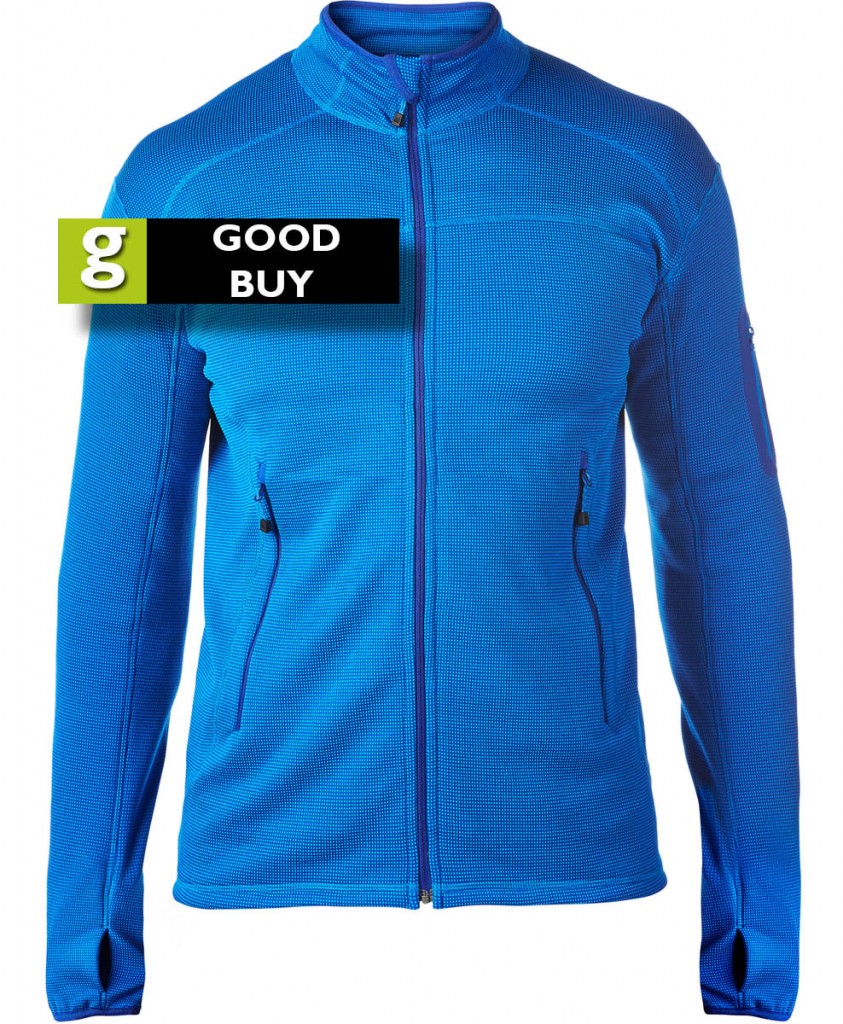
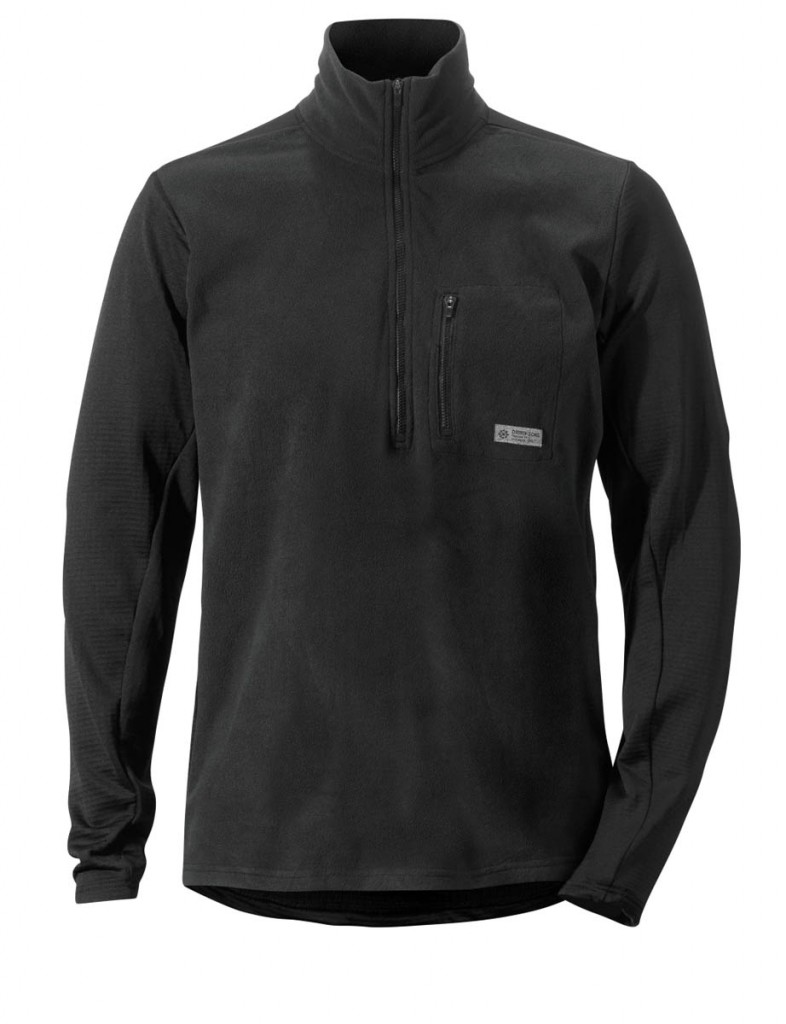


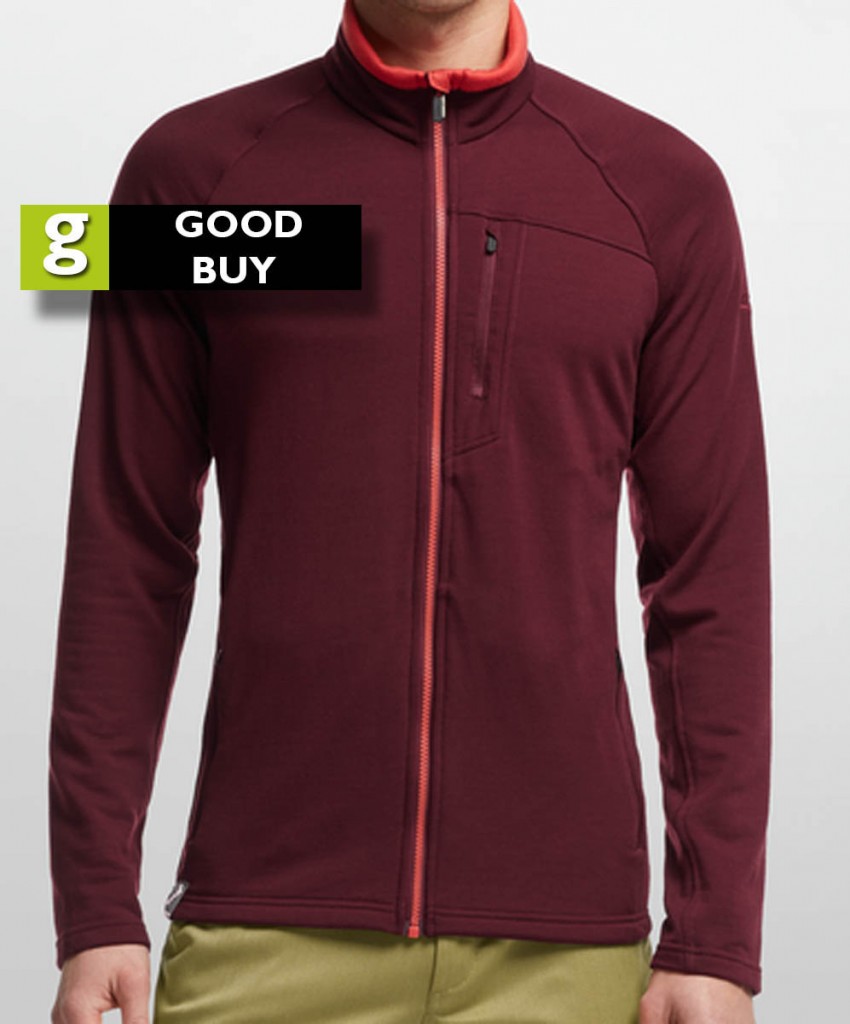
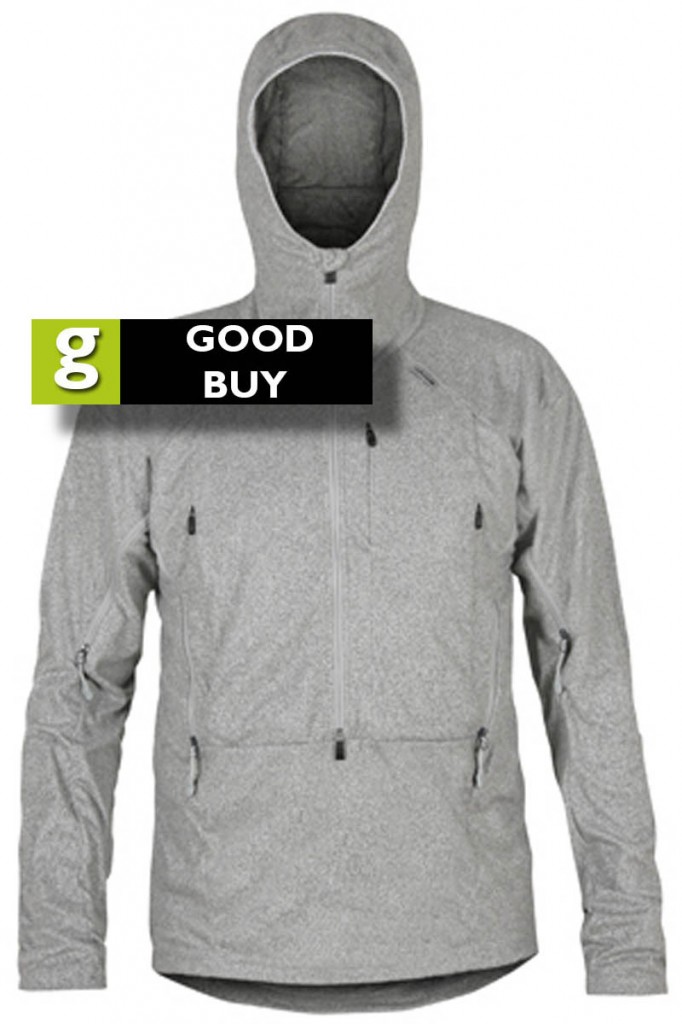

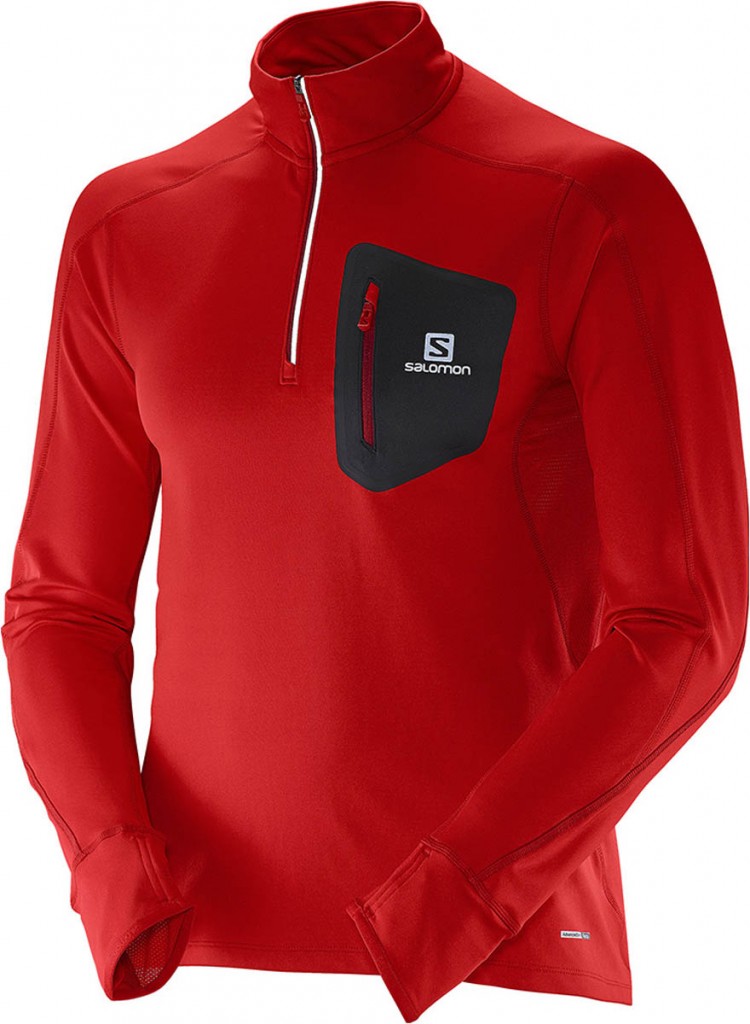

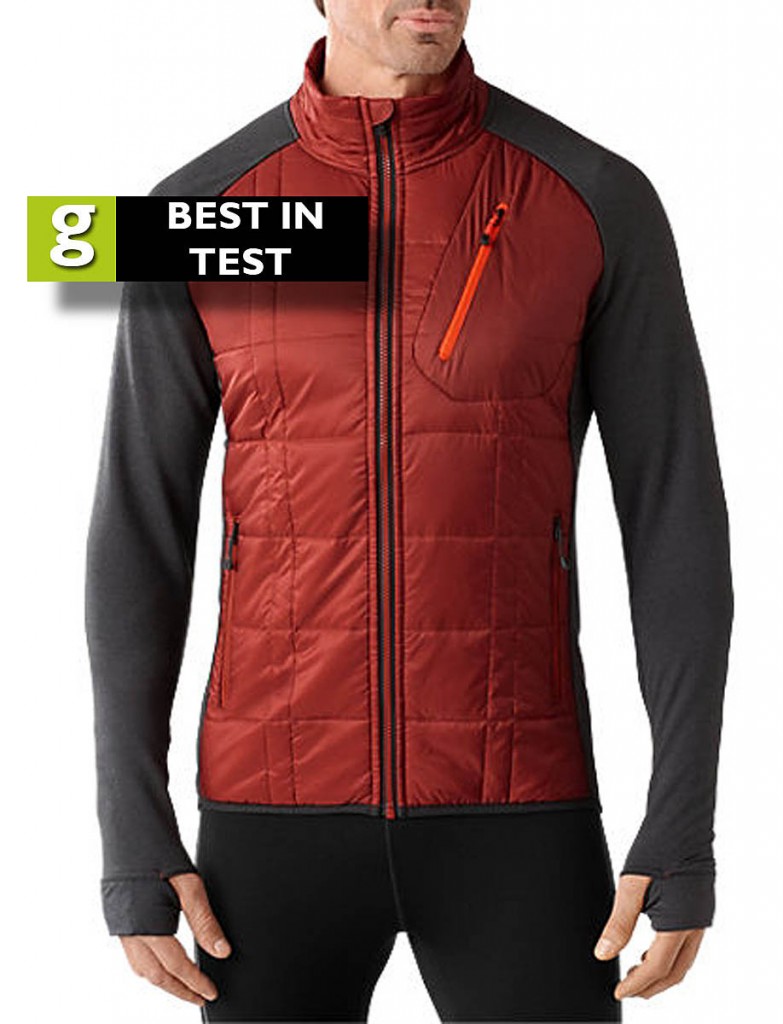
Richard Horsham
30 September 2018Most interesting, thanks.
I would like to have known how the scores were determined. More on the level of warmth provided in different conditions - windy, breezy, a gale, wet (pouring with driving rain) and windy to drizzle. I have found that the environmental conditions do make a lot of difference, as well as the effort involved, such as sitting still, walking, strenuous effort etc. Also wet and drizzly on Dartmoor in winter can be warmth sapping even at lower levels. In the Cairngorms requirements for a fleece may be different. The more information available then the easier it would be to make a choice. Best Good are useful but in many cases different fleeces are more suitable for different conditions. I have fleeces that have been rated highly in tests but are kept for overnight use, and cheap fleeces that in two layers provide better options than a single fleece. Then again the problem of taking the outer garment off, cooling down, to put on a fleece...